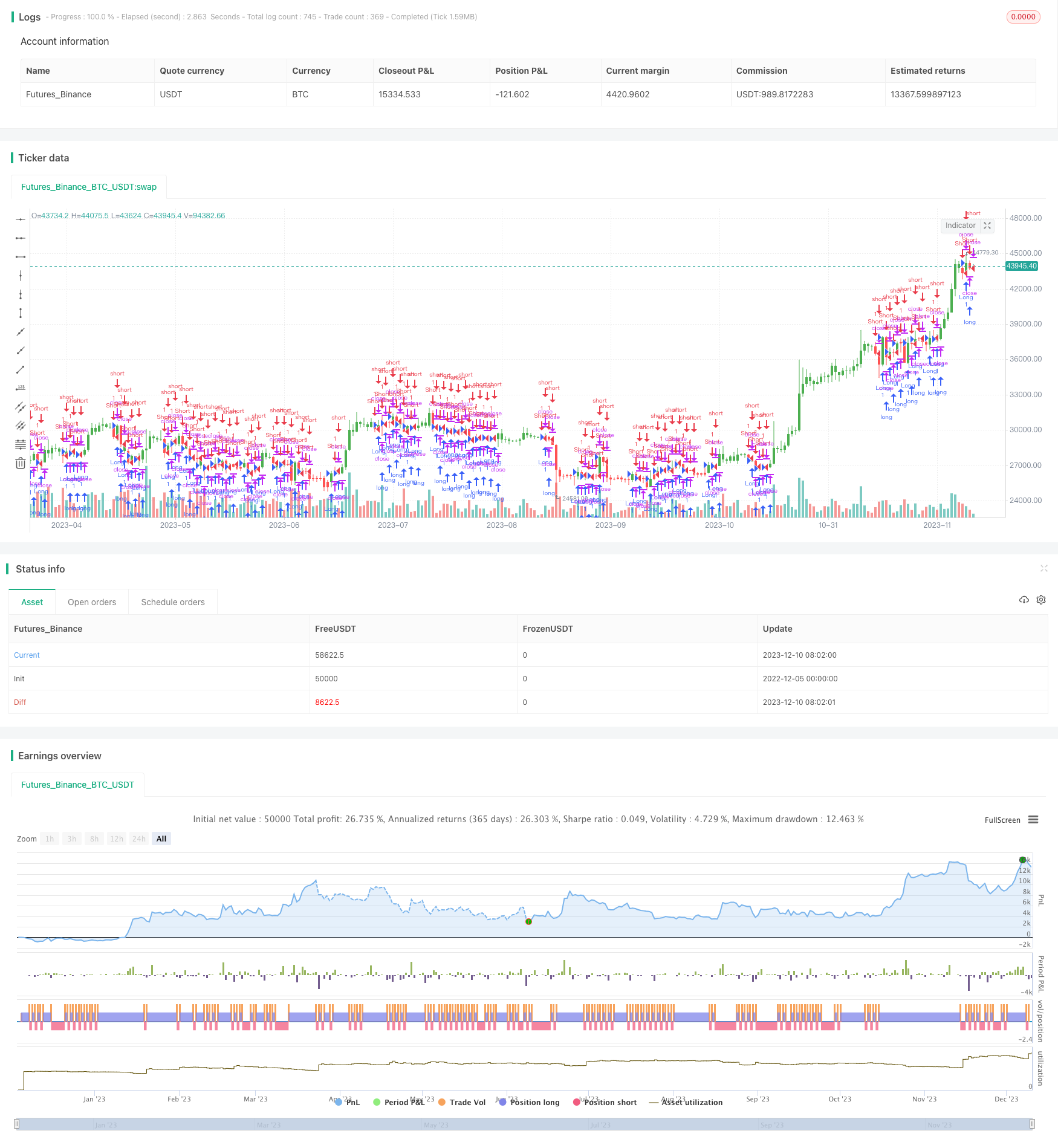
概述
枢轴点突破策略(Pivot Points Breakout Strategy)是一种基于前一天的最高价、最低价、收盘价计算出的枢轴点,以及上轨和下轨来判断市场趋势和进行交易操作的量化交易策略。该策略的主要思路是,如果价格突破上轨,做多;如果价格突破下轨,做空。
策略原理
枢轴点突破策略的计算公式如下:
枢轴点价格(Pivot Price,PP)=(前一天的最高价+前一天的最低价+前一天的收盘价)/3
上轨阻力线(First Resistance,R1)= (枢轴点价格*2)-前一天的最低价
下轨支撑线(First Support,S1)= (枢轴点价格*2)-前一天的最高价
交易信号的判断逻辑是:
如果收盘价>上轨阻力线R1,做多
如果收盘价<下轨支撑线S1,做空
该策略的主要优点有:
- 使用前一天的数据计算枢轴点,响应灵敏
- 突破上下轨形成强势趋势的概率大
- 策略规则简单明确,容易实现
优势分析
枢轴点突破策略具有以下几个优势:
计算公式简单,易于实现。只需要前一日的最高价、最低价和收盘价即可计算出枢轴点和上下轨。
响应迅速。枢轴点和上下轨每日更新,能快速捕捉到价格变化。
捕捉趋势早。价格突破上下轨代表发生较大变化,可能形成新趋势。
回撤小。设置止损可以限制亏损风险。
容易优化。可以调整参数,如使用不同周期数据计算枢轴点。
风险分析
枢轴点突破策略也存在一些风险:
错误突破风险。价格可能出现一时的错误突破,导致交易亏损。
市场震荡风险。当市场长期震荡时,价格可能多次触碰上下轨带来损失。
param风险。如果参数设置不当,如交易周期太短,也可能增加损失。
对策:
设置止损止盈,严格控制风险。
优化参数,调整周期长度。
结合其他指标过滤信号。
优化方向
枢轴点突破策略还可以从以下几个方面进行优化:
周期优化。可以测试使用更长周期如周线或月线数据计算枢轴点。
参数优化。可以测试调整上轨和下轨参数的数值,如1.5或2.5等。
过滤优化。结合移动平均线等指标过滤误差信号。
风控优化。设置动态止损止盈机制,根据市场变化调整止损位。
总结
枢轴点突破策略整体来说是一种较为简单实用的趋势跟踪策略。它快速响应市场变化,可以有效捕捉新趋势的形成。但也存在一定的错误信号风险。通过参数优化、信号过滤以及风控手段,可以在保持其优势的同时,控制潜在风险,提高策略稳定性和盈利能力。
/*backtest
start: 2022-12-05 00:00:00
end: 2023-12-11 00:00:00
period: 1d
basePeriod: 1h
exchanges: [{"eid":"Futures_Binance","currency":"BTC_USDT"}]
*/
//@version=2
////////////////////////////////////////////////////////////
// Copyright by HPotter v1.0 27/06/2018
// The name ‘Floor-Trader Pivot,’ came from the fact that Pivot points can
// be calculated quickly, on the fly using price data from the previous day
// as an input. Although time-frames of less than a day can be used, Pivots are
// commonly plotted on the Daily Chart; using price data from the previous day’s
// trading activity.
//
// You can change long to short in the Input Settings
// WARNING:
// - For purpose educate only
// - This script to change bars colors.
////////////////////////////////////////////////////////////
strategy(title="Floor Pivot Points Backtest", shorttitle="FPP", overlay = true)
xHigh = request.security(syminfo.tickerid,"D", high[1])
xLow = request.security(syminfo.tickerid,"D", low[1])
xClose = request.security(syminfo.tickerid,"D", close[1])
reverse = input(false, title="Trade reverse")
vPP = (xHigh+xLow+xClose) / 3
vR1 = (vPP * 2) - xLow
vS1 = (vPP * 2) - xHigh
pos = iff(close > vR1, 1,
iff(close < vS1, -1, nz(pos[1], 0)))
possig = iff(reverse and pos == 1, -1,
iff(reverse and pos == -1, 1, pos))
if (possig == 1)
strategy.entry("Long", strategy.long)
if (possig == -1)
strategy.entry("Short", strategy.short)
barcolor(possig == -1 ? red: possig == 1 ? green : blue )